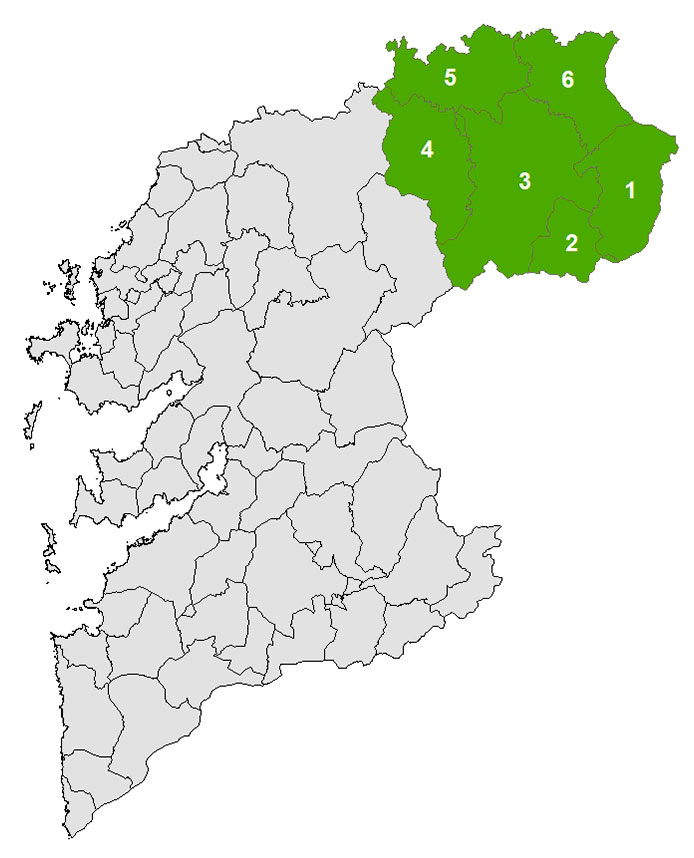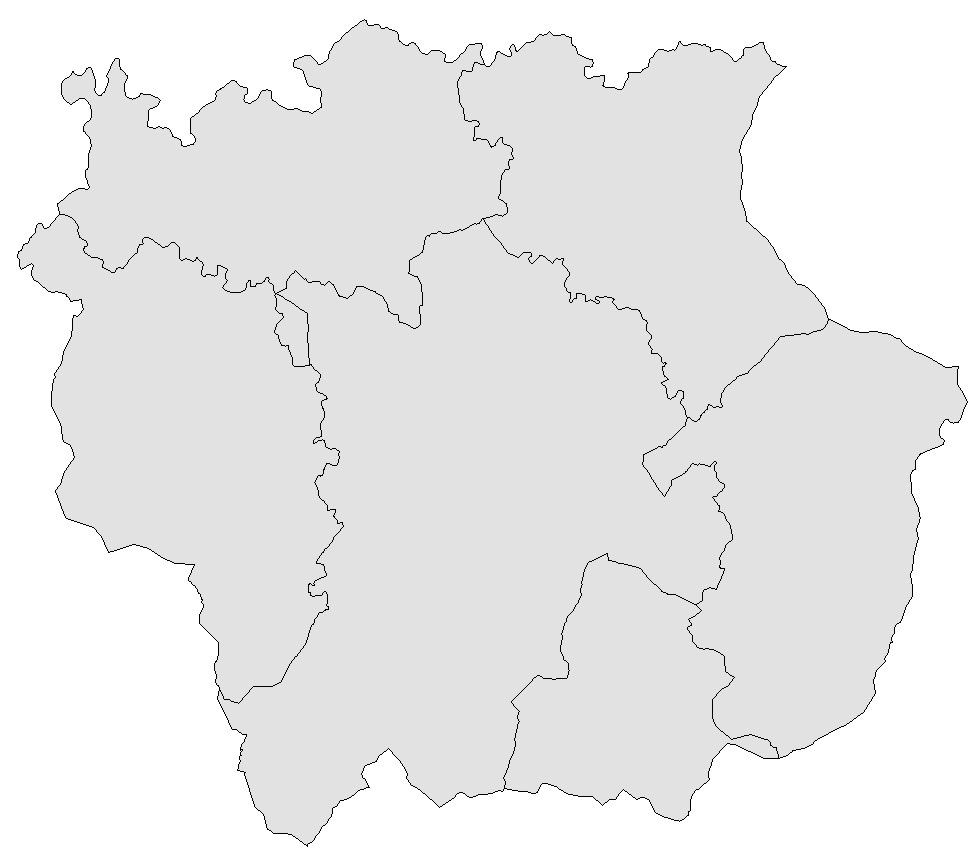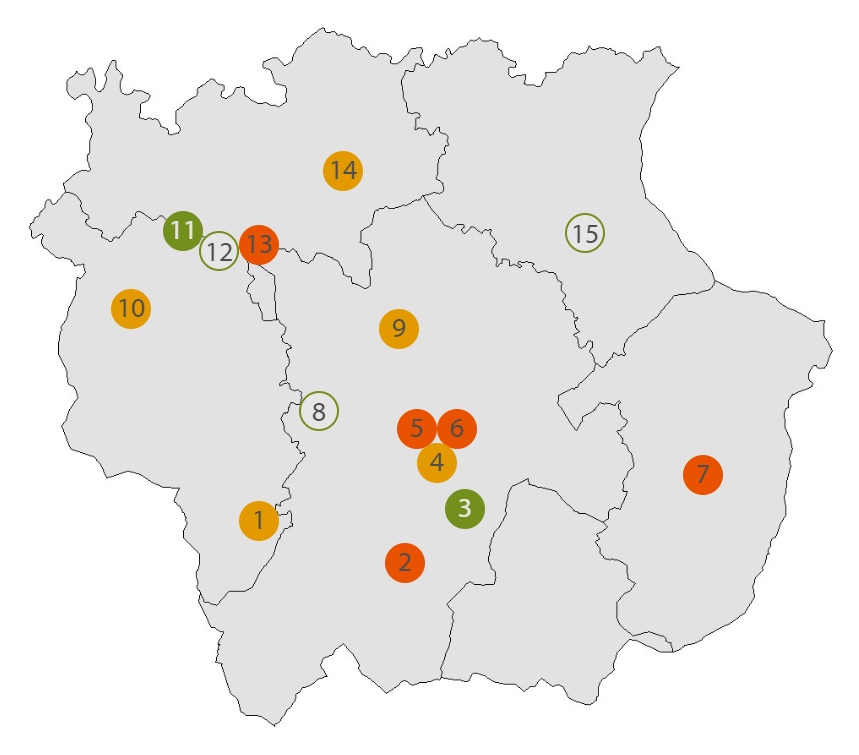12.EXPERIENCE THE REGION OF DEZA
INLAND
INLAND
Come and enjoy the region of Deza, an inland region boasting a beautiful landscape with vast oak groves and riverside woods coexisting with castros (pre-Roman hillfort settlements), pazos (typical Galician manor houses), churches, monasteries and pendellos (old market stalls). You will discover museums connected to the traditional rural life that bring us closer to the archaeology, art and gastronomy of the region. Moreover, you will visit buildings that will take you back in time centuries ago and will learn about nobility, religion or economy.
Come and experience the region of Deza in a tour of the towns of Rodeiro, Dozón, Lalín, Silleda, Vila de Cruces and Agolada. Deza has been a traditional farming town, and enjoys a beautiful landscape rich in history. The vast oak groves and riverside woods are found surrounding castros (pre-Roman hillfort settlements), pazos (typical Galician manor houses), churches, monasteries and pendellos (market stalls). These buildings will take you back in time centuries ago and show you more about the nobility, religion or economy of this inland part of the province.
This region boasts museums that show how the traditional rural life was, introduce us to the archaeology of the region and its local cuisine, and provide us with an insight into tungsten mining in Fontao. They also reveal some interesting facts, such as the case of a priest who, in the 19th century, built an astronomical observatory in Lalín.
The majestic pazos, which stand out for its stately architecture, are evidence of the significance that agriculture and livestock had in the region.
The austere monasteries and churches bear witness to the establishment of religious communities devoted to farming. The pendellos, constructions that served as market stalls, and no longer in use, used to be bustling meeting places for buying and selling farm products.
Round off your experience by tasting some of the delicacies obtained in the forests, woods and fields, such as meat, vegetables, dairy products, wine, chestnuts or honey. The meat from A Bandeira and the ecological cheese from the Designation of Origin Arzúa-Ulloa stand out.

- 1 - Rodeiro
- 2 - Dozón
- 3 - Lalín
- 4 - Silleda
- 5 - Vila de Cruces
- 6 - Agolada


MUSEUMS
-
Museum that illustrates the Galician rural life, farming works and traditional trades.
Codeseda, 7, Doade, 36519 Lalín -
This 19th-century building used to be the residence of the priest and scientific Ramón María Aller, who built the first Astronomical Observatory in Galicia.
-
Exhibition that shows the castro (pre-Roman hillfort settlement) culture, legends and the Atlantic diet, as well as the festivals and cuisine of the region.
-
It illustrates the history of the town through archaeological remains as well as objects related to the life and painting works by the artist José Luis Vázquez.
Rúa A28, baixo, 36530 Rodeiro
By appointment onlyPhone: +34 986 790 301 -
This museum, a good example of industrial heritage, shows how tungsten was extracted, especially during the wars that took place throughout the 20th century.
Praza Joaquín Basilio Bas, s/n, Fontao, 36583 Vila de Cruces
By appointment onlyPhone: +34 986 582 259
OTHER POINTS OF INTEREST
-
It was founded in the 17th century by Álvaro Núñez Taboada. Later, the Galician writer Emilia Pardo Bazán used to stay for long periods in this pazo. Some of its main features are its row balcony, the servants’ houses, two ovens, a shed, a hórreo (typical Galician raised granary house) and a dovecote.
-
It was founded in 939 and built on the grounds of a small chapel. Throughout its history, the monastery was granted important relics and was under the protection of the Asturian-Leonese Kings.
-
These 18th-century buildings, popularly known as pendellos, have served as meeting and trading points. They are good examples of the traditional architecture of the region and are listed as part of the intangible heritage by the Unesco.
CULINARY MOMENTS
-
This Festival of Tourist Interest in Galicia, held in August, is one of the most popular gastronomic events in the region of Deza.
-
It is held on the Sunday before Carnival Sunday and is listed as a Festival of National Tourist Interest. Its main attractions are the cocido (Galician typical stew) and the products obtained from the pork.
-
Festival where one can taste cured or roasted ham accompanied by bread and wine. It is held on 14 August in the parish of Bermés.
-
This Festival of Galician Tourist Interest takes place in August and includes an empanada (Galician savoury pie stuffed with seasonal fillings) contest, with prizes for restaurants and homemakers.
-
This Festival of Tourist Interest of Galicia is held in May. There, you can taste its popular free-range chicken while enjoying musical and cultural activities.
NATURAL SPOTS
-
Also known as carballeira de Quiroga (oak grove of Quiroga), it is an outstanding oak and chestnut grove, with trees being up to 30 metres tall.
-
An area with rich landscape value with a large cascade, the highest in Galicia.
OTHER POINTS OF INTEREST
- Monastery of San Pedro de Vilanova (Dozón)
Belonging to the Benedictine Order, it is a late Romanesque building (12th-13th centuries). The façade is austere and the interior is adorned in detail and has a wooden roof.
- Pendellos of A Gouxa (Dozón)
They are a group of 18th-century buildings, popularly known as pendellos, which have hosted fairs and markets from their origins. The fair of A Gouxa is held on the 11th and 23rd of each month. At the fair, it is possible to taste carne ao caldeiro (boiled beef meat with paprika and olive oil) and pulpo á feira (typical Galician octopus recipe served with oil and paprika).
[+] INFO - Recreational area in the Finca Mouriscade (Lalín)
A charming natural landscape by the Asneiro River, in the parish of Vilanova, located next to a group of water mills. It has tables and a covered barbecue area.
[+] INFO
NATURAL SPOTS
- O Candán Hill
The maximum altitude of this hill reaches more than one thousand metres. It is recommended to follow the signposted trail that runs through large open spaces and vast oak groves. At its top, there is a viewpoint that offers stunning views of the town of Silleda.
[+] INFO - Cork grove of O Arnego
Natural area typical of the Atlantic forest with Mediterranean influences. You can walk through oak and cork forests, riverside forests along the Arnego River to reach the river beach in Ponte Vilariño.
[+] INFO













